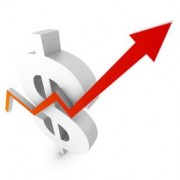Working Capital Explained
‘Working capital’ is a notion that many business owners are not familiar with. It seems difficult, complicated, so many prefer to just ignore it.
But it is important and it does not have to be complicated: It can be put in simple words.
I agree that the definition in Wikipedia is not easy to follow: “Working capital is a financial metric which represents operating liquidity available to a business, organization or other entity, including governmental entity. Along with fixed assets such as plant and equipment, working capital is considered a part of operating capital.” Even some finance experts need to read this definition three times to comprehend the wording…
To put it simply, working capital measures the short-term financial health of a business, ‘short-term’ being less than 12 months.
You would be amazed at the number of people that check this financial indicator: Bankers, Credit Analysts, Financial Analysts, Shareholders, Customers and Suppliers, even current and potential Employees. So it is important to understand it and monitor it regularly (once a year is a minimum).
The formula is: Working Capital = Current Assets – Current Liabilities
The working capital is a reflection of many company activities, including cash management, revenue collection, inventory management, payments to suppliers and debt management.
And yes, the working capital is also called ‘Net Current Assets’.
As an example, let’s look at ACME Pty Ltd:
| Assets (Short Term) | Liabilities (Short Term) | ||
| Cash | 5,000 | Bank Overdraft & Short term Loans | 40,000 |
| Trade Debtors / Accounts Receivable | 45,000 | Trade Creditors / Accounts Payable | 50,000 |
| Inventories | 100,000 | Current Tax Liabilities | 20,000 |
| Total Current Assets | 150,000 | Total Current Liabilities | 110,000 |
In the above example, Working Capital = 150,000 – 110,000 = 40,000.
So what is the working capital telling us?
- A positive working capital generally indicates that the company is able to pay off its short-term liabilities almost immediately;
- A negative working capital generally indicates that the company may be unable to pay its short-term liabilities at short notice. The company may be in danger of becoming insolvent.
Over several years, this is what this indicator tells us:
- An increase in working capital suggests the business is probably increasing turnover;
- On the other hand, a decrease in working capital suggests the business is probably experiencing a decrease in turnover and is becoming over-leveraged.
If you prefer to use ratios rather than dollar values, you can use the Working Capital Ratio, also known as the Current Asset Ratio, or the Current Ratio. It is equal to Current Assets divided by Current Liabilities. A ratio below one or just equal to one is equivalent to a negative Working Capital: It is an alarm bell. The higher the ratio, the better.
By nature, different industry sectors will require more or less working capital: A grocery store should have a small working capital, whereas a manufacturing business will typically have a large working capital.
But you can control your working capital. You do this by managing each of its individual components: The Cash, the Debtors, the Inventories, the Creditors and the Short Term Borrowings. I am talking about active management, not just reviewing what the figures look like.
As a conclusion, you do want to make sure your working capital does not decrease, or if it does that it decreases only in measured and controlled terms. A healthy working capital will reassure all your stakeholders.
In my next blog, we will explore how the working capital impacts your company growth.
All the best to you and to your business!
















